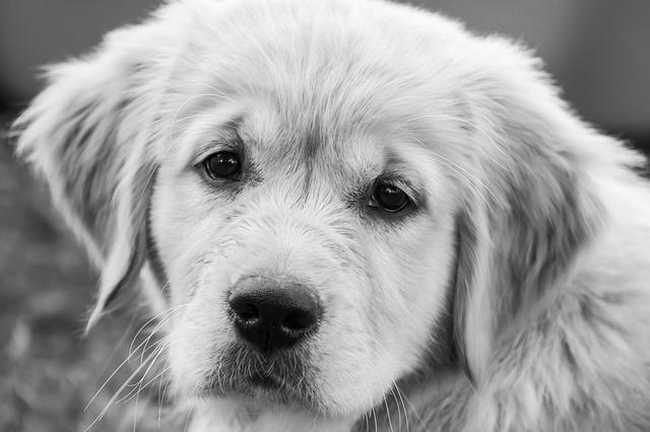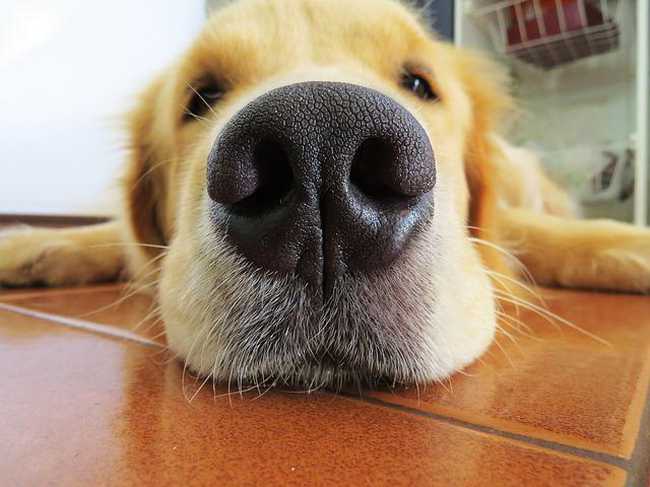Do Golden Retrievers Have Dew Claws? (Discover The Facts)
Golden Retrievers do not have rear dew claws. Injury can happen with any nails not kept trimmed. In Europe, dew claws are not removed. We feel that if God put them there, they are best left alone.
Dew claws are the small nails on the inside of a dog’s front legs, and on the back legs in some breeds (including the Golden Retriever). They’re called “dew” because they often seem to collect dew or moisture when your dog goes outside.
While they don’t serve any real purpose, some people believe that they help a dog get traction when turning quickly. Others think that they help protect a dog’s leg from getting scraped when he’s running through tall grass or brush.
The bottom line is that there is no need to remove dew claws unless they’re causing problems for your dog (such as tearing easily or getting caught on something). If you decide to have them removed, it’s a relatively simple procedure that can be done by your veterinarian.
1. What are dew claws?
Dew claws are the medial or first digit of the rear limb in the dog. The first phalanx and P2 are often missing, and P3 and the claw are attached only by skin and fibrous tissue. In some breeds, there are two dewclaws. Double dewclaws are breed standard specific in Great Pyrenees and briards and should not be removed.
The primary purpose of Dew Claws is to provide traction when a dog runs, brakes or changes direction quickly. They also help protect a dog’s leg from being cut by debris such as sticks while running through brush. While most dogs have four toes on their feet, some breeds (such as the Great Pyrenees) have double dew claws on their hind legs.
2. Do all dogs have dew claws?
Most dogs have dew claws on their front legs, but some breeds also have them on their hind legs. The Great Pyrenees and Briard are two examples of breeds that typically have dew claws on both the front and hind legs. While dew claws are considered part of the breed standard for these breeds, they are often seen as “abnormal” in other dogs.
Dew claws are essentially extra toes that are located higher up on the foot than the regular toes. In some dogs, they may be attached to bone or cartilage, while in others they may simply be loose skin flaps. Regardless of how they’re attached, most dew claws do not touch the ground when the dog is walking or running, which is why they’re often referred to as “vestigial” or “non-functional” digits.
So why do some breeds have dew claws while others don’t? It’s thought that dew claws may provide additional traction when climbing or maneuvering over rough terrain. They may also help protect the leg from scrapes and scratches. However, there is no definitive answer as to why some breeds have them and others don’t.
3. Why do some people believe that dew claws are beneficial for dogs?
Dew claws are the nails that are located on the inside of a dog’s front legs, near their paws. While some people believe that dew claws are simply superfluous body parts, there is actually a surprising amount of debate surrounding them. Some people think that dew claws are beneficial for dogs because they provide additional grip and traction when running or climbing.
Additionally, some dogs also use their dewclaws to help them climb trees, hold objects to better chew on them, or climb out of the water if they’ve broken through ice.
However, others believe that dew claws are actually more harmful than helpful. They argue that because dew claws do not touch the ground when a dog is walking or running, they can easily get snagged on things like branches or fences, which can cause ripped nails and other injuries. There is also concern that over time, as a dog’s nails grow longer, the weight of the nail could eventually cause the bone in the toe to fracture.
So what’s the verdict? Are dew claws beneficial or harmful for dogs? The answer may depend on your individual dog and his or her activity level and environment.
If your dog is relatively inactive and lives mainly indoors, then chances are good that his or her dew claws will never give you any trouble. However, if your dog is very active and spends a lot of time outdoorsrunning around in rough terrain or climbing trees), then you might want to reconsider keeping those nails intact.
4. Are there any risks associated with leaving dew claws intact?
Most people are familiar with the concept of a dew claw – it’s that little thumb-like toe on the inside of a dog’s front leg, just above the paw. Some breeds also have them on their back legs. While they may look cute, there is some debate as to whether or not they serve any real purpose, and whether or not leaving them intact poses any risks to your dog. Let’s take a closer look at dew claws and see what the experts have to say.
5. Should you remove your dog’s dew claws?
Dew claws are the nails on the innermost part of a dog’s paw. They are typically removed when a dog is very young, but some people choose to leave them intact. There are pros and cons to both choices, and ultimately it is up to the owner to decide what is best for their pet.
There are several reasons why someone might choose to remove their dog’s dew claws. One reason is that it can help prevent injury. If a dew claw gets caught on something, it can tear or break off, which can be painful for the dog. Dew claws can also grow in an abnormal way if they are not trimmed regularly, which can cause problems with walking or running. Another reason to remove dew claws is aesthetics; some people feel that they look nicer without them.
However, there are also several reasons why you might choose to keep your dog’s dew claws intact. For one thing, they serve an important purpose; front dewclaws help stabilize adog when they make quick turns while running or playing.
Additionally, rear dewclaws provide traction when a dog goes up or down stairs; they act like “thumbs” that help grip the ground (think of how we use our thumbs when climbing).
Some dogs also use their rear dewclaws as “rudders” when swimming – they help them change directions quickly in the water. Finally, many people believe that removing a animal’s body parts simply for cosmetic reasons is unnecessary and cruel.
6. How is the procedure to remove dew claws performed?
Dew claws are typically removed by a breeder (or the breeder’s veterinarian) at three to five days of age. When done at home, they are clipped off with scissors or nail clippers. If done by a veterinarian, they are removed under local anesthesia, clamps, and a scalpel.
There are several reasons why dew claws may be removed. In some cases, dew claws can grow in an abnormal way that causes them to curl around and grow into the pads of the feet. This can be painful for the dog and cause problems walking. Dew claws can also get caught on things and tear, which can be painful and lead to infection. In some dogs, dew claws may not provide any function whatsoever. For these reasons, many breeders choose to remove dew claws before they go to their new homes.
If you have adopted a puppy who still has his dew claws intact, you may want to consider having them removed if your dog is prone to injury or if you think it will make him more comfortable.
7. Is it painful for a dog to have their dew claws removed?
Dew claws are the small, claw-like appendages that can be found on the back of some dogs’ legs, near their ankles. While they may not seem like much, dew claws can actually cause a number of problems for dogs if they are not properly cared for. For example, dew claws can easily become caught on things and tear, which can be extremely painful for your dog. Additionally, dew claws can also grow into the pads of your dog’s feet, causing discomfort and potentially leading to infection.
Because of these potential problems, many dog owners choose to have their dog’s dew claws removed. The procedure itself is relatively simple and only takes a few minutes to complete. However, it is important to note that it can be quite painful for your dog – especially if they are not used to having surgery. Additionally, dogs are prone to chewing at their bandages and stitches after surgery, which can lead to further pain and even infection at the removal site.
So, is it worth putting your dog through all of this just to get rid of their dew claws? Ultimately, that decision is up to you as an owner. If you feel comfortable taking care of your dog’s dew claws and making sure they do not become caught or torn, then there may be no need to remove them.
However, if you think there is even a chance that your dog could injure themselves with their dew claw or develop an infection because of it – then removing them may be the best option for both you and your pet.
8. What is the recovery time after having dew claws removed?
Dew claws are the nails on the inside of a dog’s front legs, just above the paw. They’re typically removed when a puppy is just a few days old, but they can be removed at any age. The procedure is relatively simple and doesn’t require anesthesia.
The recovery time after having dew claws removed is usually up to two weeks. If done at a few days old, the wound should heal in three days, with no sutures needing removal.
9. Are there any potential complications that can arise from removing a dog’s dewclaw/s?
Dewclaws are the nails on the inside of a dog’s front legs, and they’re often removed when puppies are young. However, there can be potential complications that arise from removing a dog’s dewclaw/s.
Any nail can become partially or completely pulled off, broken, split, infected, or ingrown (if not properly trimmed). In some cases, removal of the dewclaw may also damage the tendon that attaches the muscle to bone. This can lead to lameness in the affected leg.
If you’re considering having your dog’s dewclaws removed, talk to your veterinarian first. They can help you weigh the risks and benefits and make an informed decision about what’s best for your pet.



